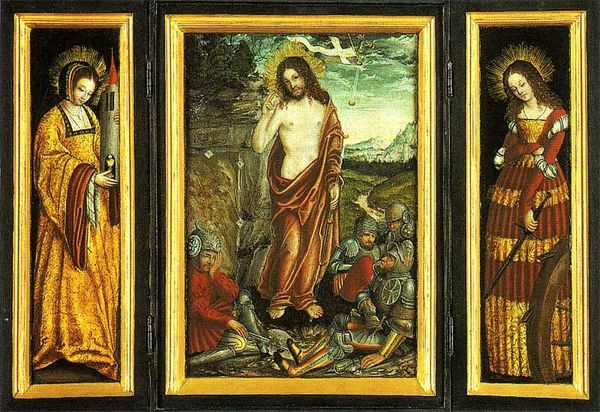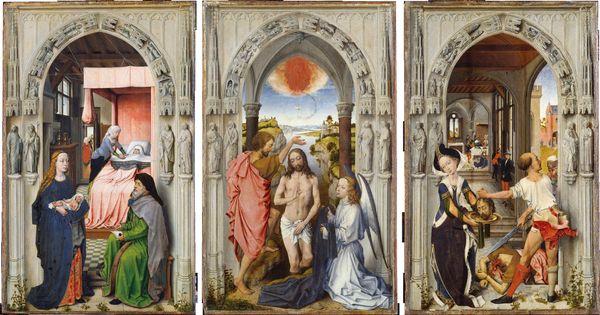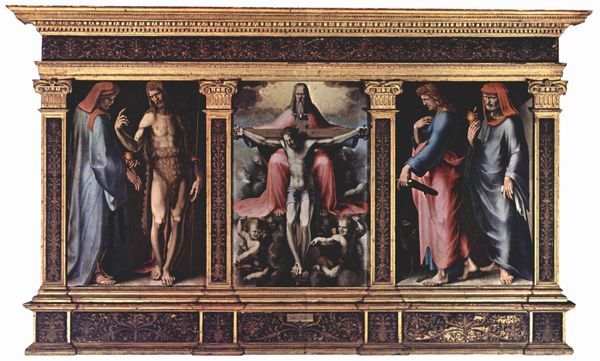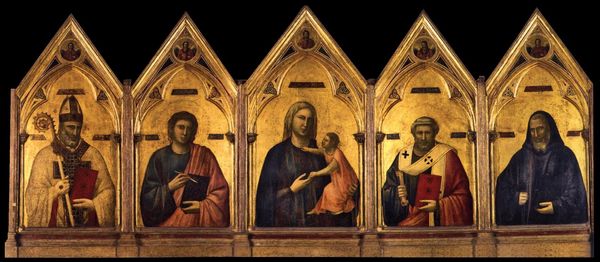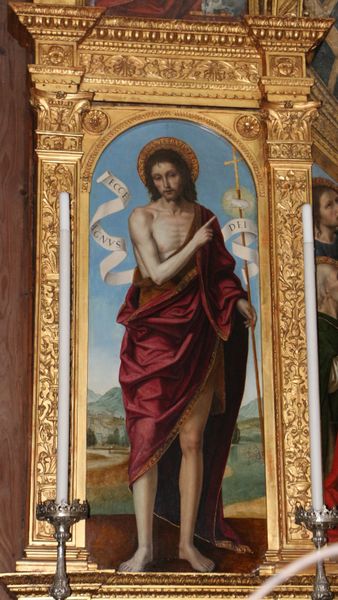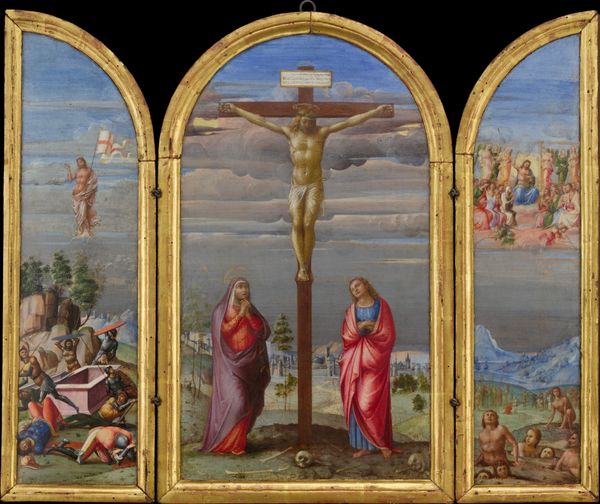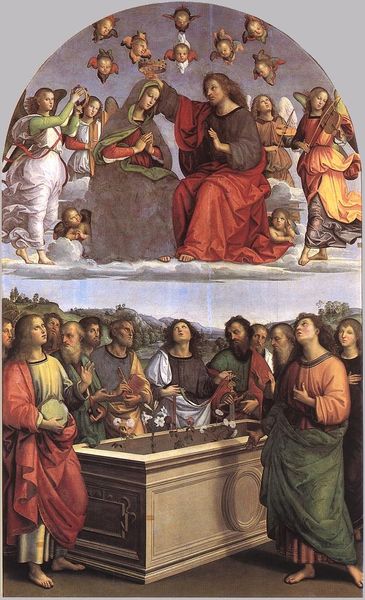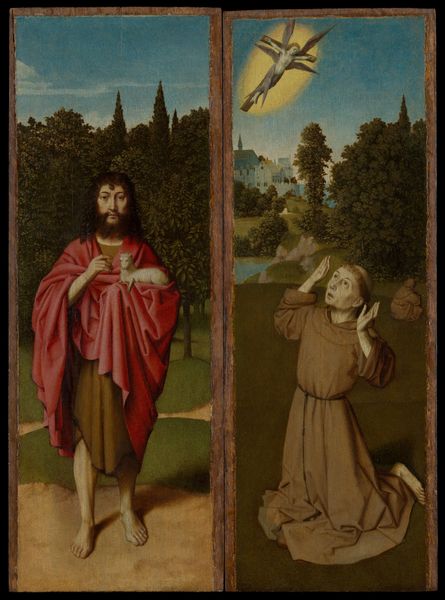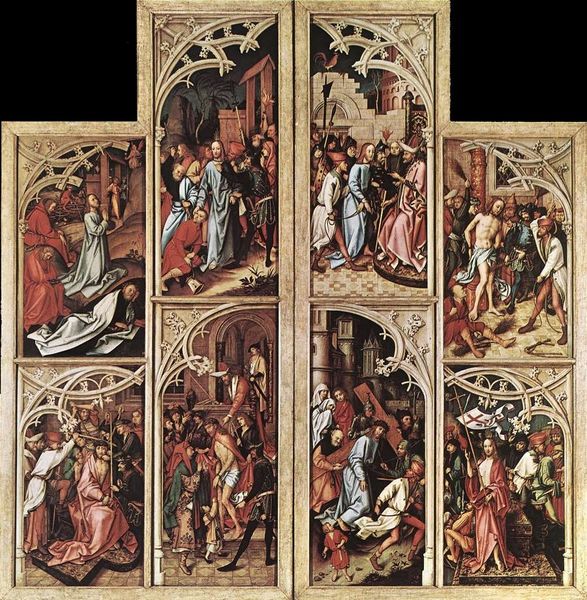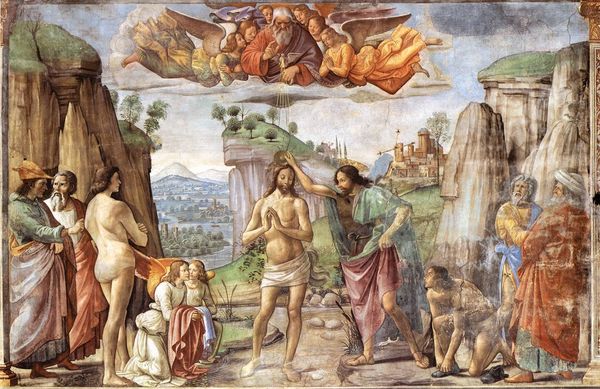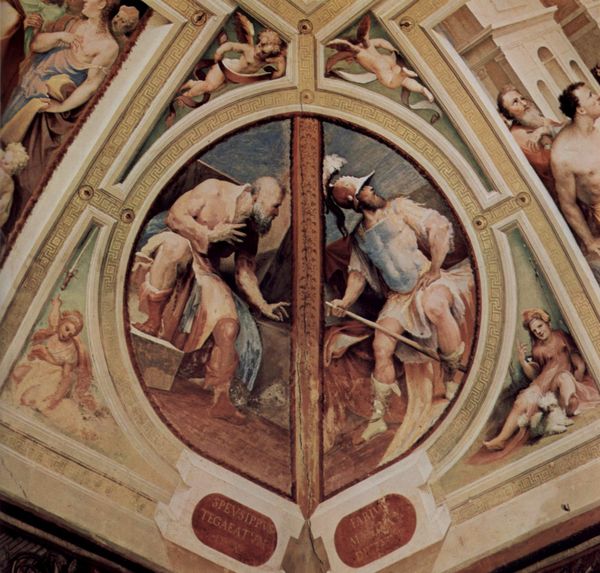
panel, tempera, painting
#
panel
#
narrative-art
#
tempera
#
painting
#
figuration
#
history-painting
#
italian-renaissance
#
decorative art
Dimensions: 61.3 x 44.6 cm
Copyright: Public domain
Curator: Here we have Hans Memling’s "The Resurrection, central panel from the Triptych of the Resurrection", created around 1490. Editor: What immediately strikes me is how each of these panels operates on different perspectival systems and yet manages to produce a singular, composite aesthetic. The composition, however, seems overcrowded and oddly flattened, as though depth is suggested and denied in the same stroke. Curator: Absolutely. That interplay is intentional, speaking to the multi-layered symbolism embedded in the scene. The central panel, made with tempera on wood, presents a triumphant Christ emerging from the tomb, symbolizing hope, renewal, and salvation for mankind. Editor: Salvation made all the more evident when one examines the symmetry and proportion in how he occupies the centre of the piece and looms over the foreground. Notice, too, the sleeping soldiers below. It’s a classic example of highlighting divinity through controlled geometric composition and colour value. Curator: Exactly. The sleeping soldiers serve as foils to Christ's awakened, powerful presence. These visual cues reinforce the power of the divine breaking through the earthly and, let's not forget, these narrative tableaus and imageries have precursors to many other stories in culture and traditions worldwide, going as far back as Gilgamesh's quest for immortality, just to mention one. Editor: I agree about this cultural continuity but am less keen on associating aesthetic beauty or value to narrative symbolism, per se. What ultimately strikes me as innovative is the way Memling combines the Late Gothic style with that of the Early Renaissance. It’s especially noticeable in his masterful use of oil paint to modulate light. Curator: It does remind one of those early masters and their experimentation with perspective and tone. Ultimately, this triptych does remind us that faith, hope, and cultural memories live and interact with one another across various timelines, don't they? Editor: Yes, and I would like to underscore the significance of this work as a bridge between traditions, achieved through meticulous observation of color and the rendering of form.
Comments
No comments
Be the first to comment and join the conversation on the ultimate creative platform.
